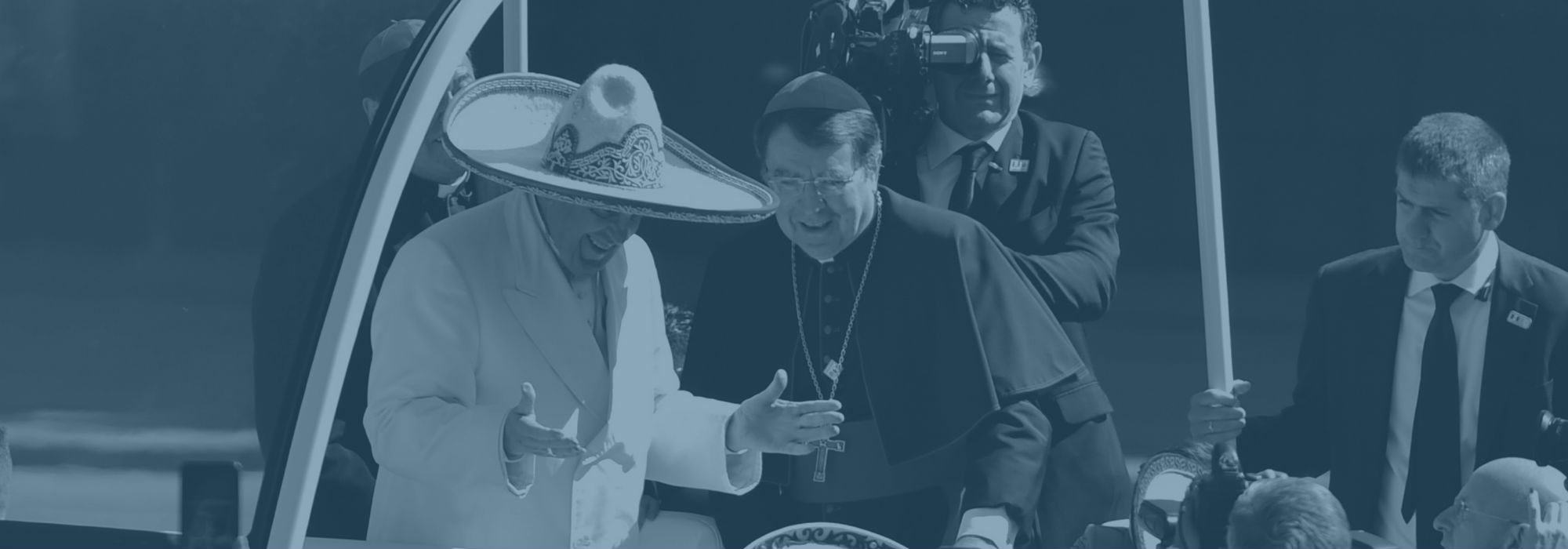By Jacob Shapiro
Since Feb. 12, Pope Francis has been on an official visit to Mexico. On Sunday, he held an outdoor mass in the poor and crime-ridden city of Ecatepec, attended by hundreds of thousands of Mexicans. Yesterday, his holiness visited Chiapas, home to one Mexico’s largest indigenous populations and the origin of the 1994 Zapatista uprising, which to this day is engaged in a war of civil disobedience with the Mexican government. The pope denounced the historical exploitation of Mexico’s Indians and presided over a mass held in three native languages, integrating local cultural elements into the traditional service, a practice that goes back to the first Catholic missionaries in the New World.
The geopolitical importance of the Holy See today is far less than it once was, when popes ruled significant territory, the Vatican supported religious wars like the Crusades and missionaries traveled the world, attempting to spread Christianity’s message from the New World to the Far East. But religion still remains a powerful force in geopolitics, and Pope Francis – as the spiritual leader of 1.2 billion Roman Catholics in the world, 40 percent of whom live in Latin America – still carries political gravitas. This is especially so given that he is from Argentina and the first pope to come from the Americas. He also played a key role in helping mediate between the U.S. and Cuba before U.S. President Barack Obama eased travel restrictions to the island in December 2014. It’s a far cry from a religious army of Catholics, but his influence is also not inconsequential.
The international political system today is based in large degree on nation-states. The seeds of this system were sown by the nationalist movements of the 19th century, when the concept of nations was defined and fused with the notion that a political state should be ruled by a particular nation. This eventually made its way into the mainstream under the principle of national self-determination, which was enshrined in the Charter of the United Nations after World War II – one of the bloodiest conflicts in human history and one in which many of the actors superimposed nationalist sentiments onto destructive political ideologies.
It’s not that nationalism by itself causes conflict between different groups. Conflict between Germany and France in the 20th century was inevitable, as was conflict between the United States and Japan in the Pacific. Iran is one of the proudest nations in the world, and that has not stopped the Islamic Republic from reaching an understanding with the United States, which it has called “the Great Satan.” There are concrete economic and political reasons for nation-states’ behavior. Even so, nationalism has arguably been the most effective ideology states in the modern era have used to unite large groups of people to achieve state goals. Nationalism – the idea that one’s nation is one’s own, and that love for and protection of the nation is a basic natural impulse – taps into the very heart of geopolitics and can produce both terrifying and inspiring results.
There really exists only one significant alternative path to the nation in today’s world. And that is religion. One of Christianity’s core beliefs is that anyone can enjoy the benefits of that faith. What began as a radical Jewish sect in ancient Palestine became an idea that salvation could belong to any single human being, no matter their language or skin color. This is in part what enabled Christianity to spread around the world. Islam is, in this way, quite similar. This is particularly salient in the Middle East, where Islam is the only transnational communal framework that has overcome the region’s tribalism. Religion exists in a geopolitical world, but also can resist geopolitical forces. Of course, religion can be used, just as nationalism can be used. Human history is littered with examples of how religion can contradict what a purely geographic explanation would deem possible.
To explain what this all has to do with Pope Francis holding Catholic services in Mexico, we must first delve into a little bit of Mexican history. The history of the Catholic Church in Mexico stretches back to when Spanish conquistador Hernán Cortés first arrived in 1518. After his military victory over the Aztec Empire and the death of Montezuma, the spiritual conquest of Mexico began in earnest.
The difference between the British settlers of the New World and the various friars and clergy who converted Mexico’s indigenous population is striking. Millions of Indians were converted to Christianity in Mexico, and elements of the older religions were integrated into the Catholicism that arose there. Further north, Protestants did not have a similar relationship with the indigenous populations they encountered. This is not to say that the indigenous peoples of Mexico were treated well, or that they were not subjected to violent conquest.
For the next 300 years, until Mexico gained its independence in 1821, the Catholic Church and the Spanish-controlled armed forces were the two most powerful colonial forces in Mexico. Independence for Mexico turned out to be messy and violent: various coups, revolutions and civil wars were fought well into the 20th century, and the role of the Catholic Church was often front and center in these wars. The Reform War, fought from 1857 to 1861, was a battle for Mexico’s soul, between conservatives who wanted a strong central government, church and military, and liberals who preferred to limit the influence of the church and the military and wanted a federalist government. Benito Juárez, himself an Indian and one of the liberals who would go on to serve as president for multiple terms, once said the following about the Catholic Church in Mexico: “I wish that Protestantism would become Mexicanized and convert the Indians; they need a religion that would make them read instead of wasting their savings on candles for the saints.”
Juárez would significantly curtailed the Catholic Church’s power in Mexico beginning in 1855 when he nationalized church property, separated church and state and constricted religious education across Mexico. Under Juárez’s presidency, Mexico and the Vatican broke diplomatic relations. After a period of relative tolerance towards the church under Porfirio Díaz, the Mexican Revolution erupted in 1910. The Mexican Constitution of 1917 codified heavy restrictions on the power and influence of the Catholic Church in Mexico into constitutional law. When Plutarco Elías Calles, Mexico’s president from 1924 to 1928, became unhappy with the lax enforcement of these constitutional articles, he asked the Mexican Congress for extraordinary powers to enforce them, closed church schools and expelled foreign priests. The result was the Cristero War, a widespread peasant uprising and religious conflict that resulted in the deaths of more than 250,000 Mexicans.
The relationship between Mexico and the Vatican has always been fraught with tension, despite the fact that the vast majority of Mexico’s citizens are Roman Catholics. The anti-clerical articles of the Mexican constitution were only modified in 1992 and even then after a great deal of debate. When Pope John Paul II first visited Mexico in 1979, Mexico still did not have diplomatic relations with the Holy See; they were only restored in 1992. Even when Pope Benedict XVI visited Mexico in 2012, much of the mainstream media coverage centered on the political nature of his visit, and how then-President Felipe Calderón would use the trip to try and bolster his conservative National Action Party 14 weeks before elections.
What is remarkable about Pope Francis’ trip to Mexico is how devoid of political consequence his visit seems, and how uncontroversial it is. One of Mexico’s biggest challenges is the massive wealth gap between its richest citizens and the 53.2 percent of the population that live in poverty, according to the World Bank. In a country that has seen numerous revolutions started by the poor fed up with a system of government that does not take care of them, it is jarring to see Mexico City allow Pope Francis to go to one of the poorest and most violent cities and indict the Mexican government for creating “a society of the few, and for the few.” It is equally mesmerizing that Pope Francis would go into a region of relative anti-government sentiment and criticize Mexico for its unfair treatment of indigenous populations.
Reading just the headlines you wouldn’t get a sense of how fraught the Catholic Church’s history in Mexico is, and how significant both Pope Francis’ visit and his message are for Mexico. There was a time when the the universal appeal of the Catholic faith could stoke violent conflict among Mexican citizens. The liberals in Mexico thought that Mexico was born as a nation in 1821, when it threw off the yoke of colonial Spain. In truth that was just the beginning of a long and violent process – one that has resulted in the emergence of the Mexican nation that is taking shape today.









